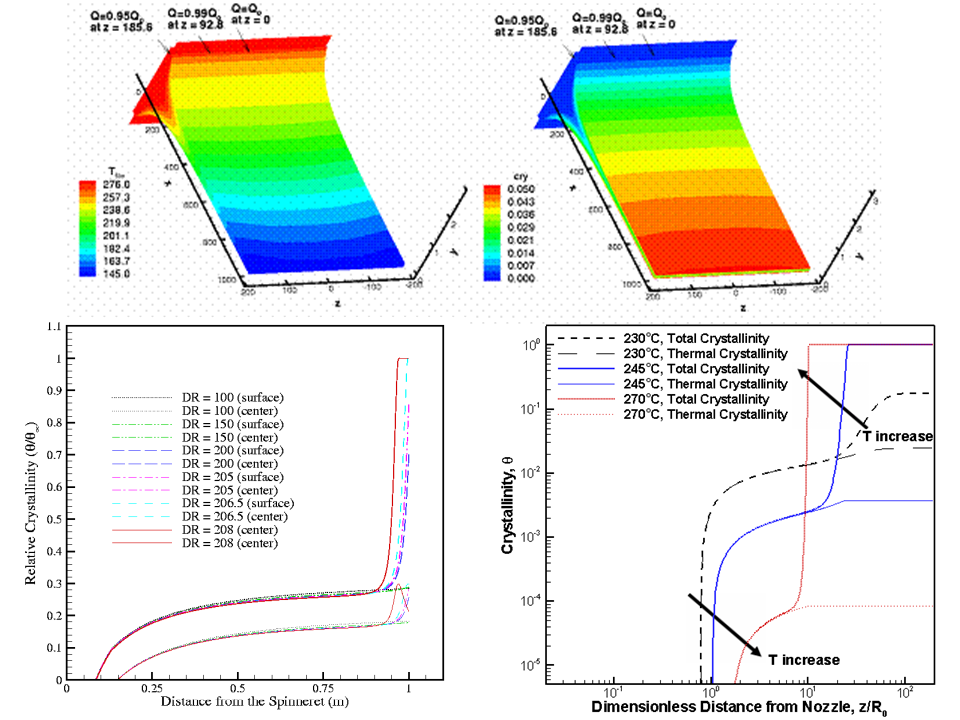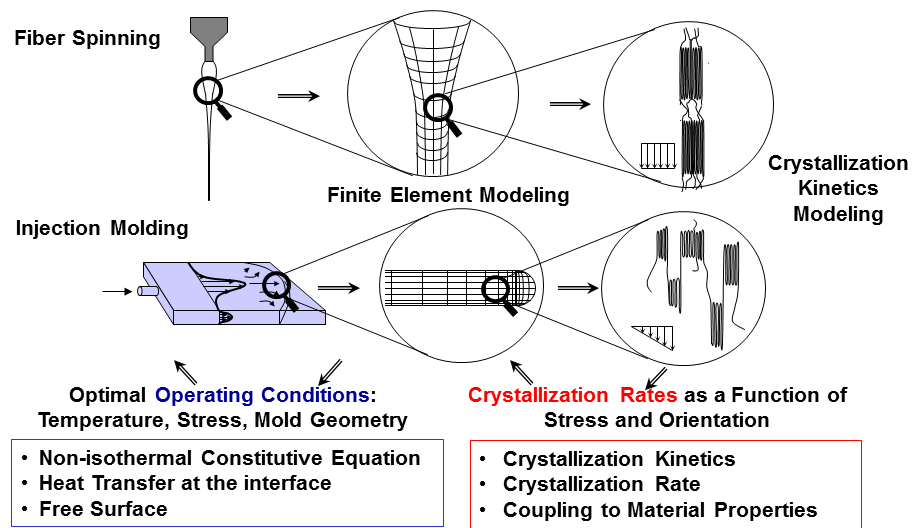The effect of flow presence on polymer crystallization needs to be explored in order to be able to study the interplay between process dynamics and properties of processed polymeric materials such as cast films (Fig. 2 a) and fibers (Fig. 2 b and c). As demonstrated by our recent crystallization study of nylon 6 and nylon 6,6 during melt electrospinning, nanofiber formation intrinsically involves drastic deformation (extension rate ~ 104 s-1 or higher) and thus a high degree of the orientation of polymer chains along the fiber axis can be achieved during a short processing time. This alignment of polymer chains can in turn lead to drastic flow induced crystallization as shown Fig. 2 c), which is more effective than conventional high speed melt spinning (Fig. 2b). We study flow induced crystallization in various nanofiber processes and explore the possibility of tailoring material properties via tuning crystallization. Our newly developed flow induced crystallization model which can provide microstructural information such as crystallite number density and average crystal size are incorporated into free surface flow of polymer melt jets.

Related Publications
- E. Zhmayev, D. Cho and Y.L. Joo, “Modeling of Melt Electrospinning for Semi-Crystalline Polymers”, Polymer 51, 274-290 (2010).
- D. Cho, H. Zhou, and Y.L. Joo, “Structural Studies of Electrospun Nylon 6 Fibers from Solution and Melt”, Polymer 52, 4600-4609 (2011).
- A. Cho, D.M. Shin, H.W. Jung, J.C. Hyun, J.S. Lee, D. Cho, and Y.L. Joo, “Effect of Annealing on the Crystallization and Properties of Electrospun PLA and Nylon 6 Fibers”, Journal of Applied Polymer Science 120, 752-758 (2011).
- E. Zhmayev, H. Zhou and Y.L. Joo, “Modeling of Non-isothermal Polymer Jets in Melt Electrospinning”, Journal of Non-Newtonian Fluid Mechanics 153, 95-108 (2008).
- H. Zhou, T.B. Green, and Y.L. Joo, “The Thermal Effects on Electrospinning of Polylactic Acid Melts”, Polymer 47, 7497-7505 (2006).
- Y.L. Joo, H. Zhou, S.-G. Lee, H.-K. Lee and J.K. Song, “Solid State Compaction and Drawing of Ultra High Molecular Weight Polyethylene Reactor Powders”, Journal of Applied Polymer Science 98, 718-730 (2005).
- Y.L. Joo, J. Sun, M.D. Smith, R.C. Armstrong, R.A. Brown and R.A. Ross, “2-D Numerical Analysis of Nonisothermal Melt Spinning with and without Phase Transition”, Journal of Non-Newtonian Fluid Mechanics 102, 37-70 (2002).
